Rotary vs Coil Tattoo Machines: Which One Truly Fits Your Style?

In the world of professional tattooing, the tools you use are more than just hardware—they’re an extension of your hand, your technique, and your artistic voice. For both experienced tattooists and apprentices just getting started, one of the most critical choices is between a rotary tattoo machine and a coil tattoo machine.
The difference between rotary and coil tattoo machines goes far beyond the sound or the way they feel in your grip. It affects everything from line sharpness and shading smoothness to maintenance routines and long-term comfort. But with endless options and strong opinions in the industry, how do you decide which is better: rotary or coil tattoo machine?
This guide compares rotary vs coil tattoo machines across essential performance metrics: mechanics, weight, noise level, vibration, precision and maintenance. Whether you're looking for the best tattoo machine for fine lines, color packing, or portraits, you'll find a clear breakdown of the pros and cons—tailored for both beginners and seasoned professionals.
Let’s take a closer look at how each type works and what makes them suitable—or not—for your specific tattooing needs.
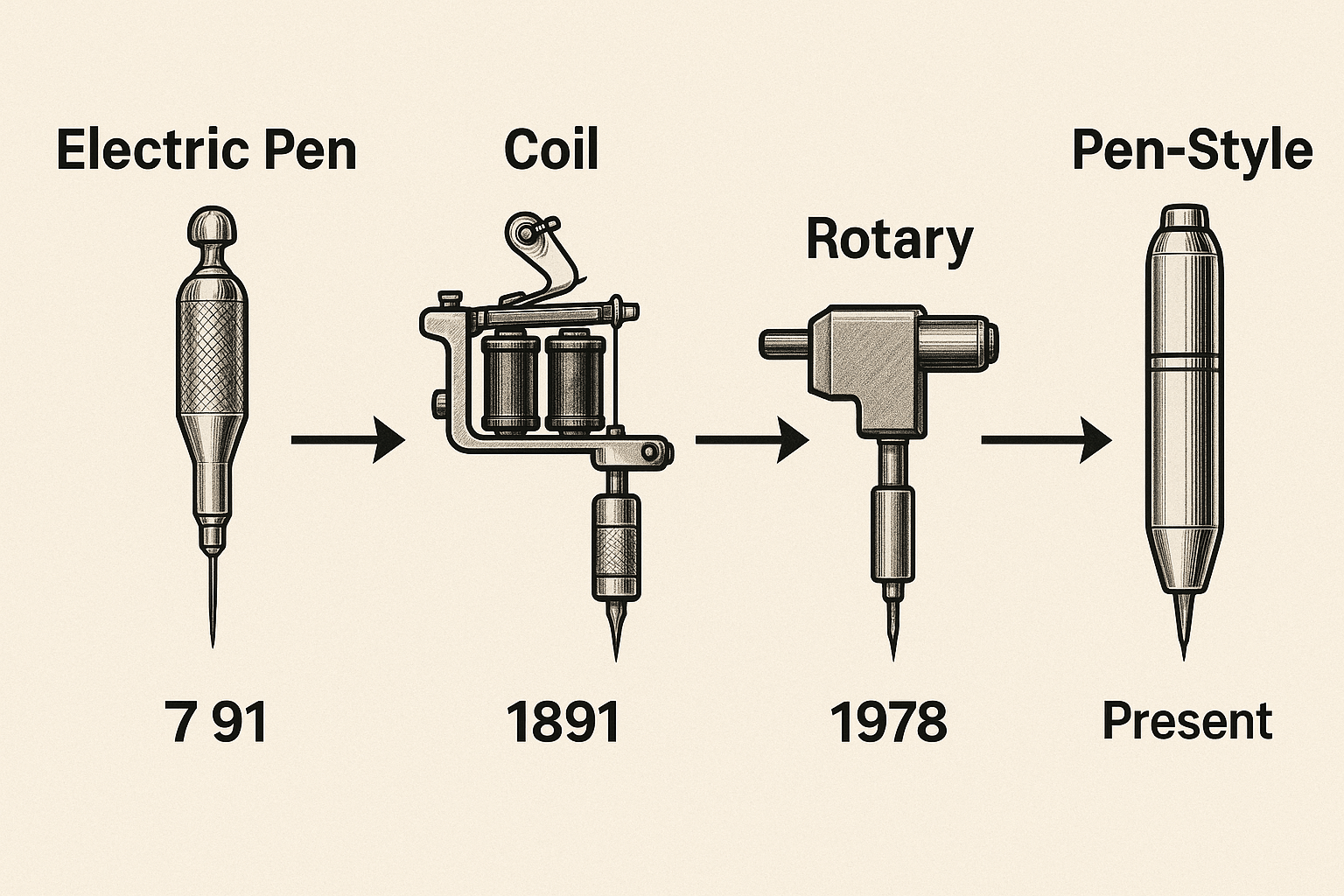
A Brief History of Tattoo Machines
Tattoo machine technology has come a long way since its inception in the late 19th century. The journey began in 1891, when Samuel O'Reilly patented the first electric tattoo machine. Inspired by Thomas Edison's electric stencil pen, O'Reilly’s design used electromagnetic coils to drive needles—a concept that still defines coil machines today.
In 1978, German tattooist Manfred Kohrs developed the first modern rotary tattoo machine, utilizing a motor instead of coils. This quiet, fluid-action machine marked a turning point, eventually leading to today’s pen-style rotaries, wireless systems, and hybrid designs that blend coil power with rotary efficiency.
Today’s market reflects this evolution, offering artists diverse tools tailored to traditional bold lines, delicate realism, and every style in between.
How Do Rotary and Coil Tattoo Machines Work?
How Does a Rotary Tattoo Machine Work?
Rotary tattoo machines operate using a compact motor that drives a cam or crank mechanism, converting rotary motion into linear movement. This movement pushes the needle in and out of the skin with smooth, consistent force. This rotary tattoo machine mechanic makes the tool quiet and low in vibration, ideal for long sessions.
- Rotary tattoo machine noise level: Typically around 60–70 decibels—significantly quieter than coils.
- Rotary tattoo machine vibration: Minimal, reducing hand fatigue.
- Rotary tattoo machine weight: Generally under 200g, often pen-shaped and ergonomically designed.
This quiet, stable operation is one reason rotary vs coil tattoo machine for beginners tends to favor rotary—it’s simply easier to learn and use without intensive mechanical knowledge.
How Does a Coil Tattoo Machine Work?
Coil machines rely on electromagnetic force. When power runs through the coils, they generate a magnetic field that rapidly pulls and releases an armature bar connected to the needle. This gives the coil tattoo machine mechanic its signature punch and buzz.
- Coil tattoo machine noise level: Up to 80 decibels, creating a traditional tattoo studio sound.
- Coil tattoo machine vibration: Noticeably higher, especially with larger coils.
Coil tattoo machine weight: Often above 250g due to metal frames and dual coils.
While they require tuning and expertise, coil machines offer unmatched power and feedback—making them a favorite for precise line work and bold traditional tattoos.
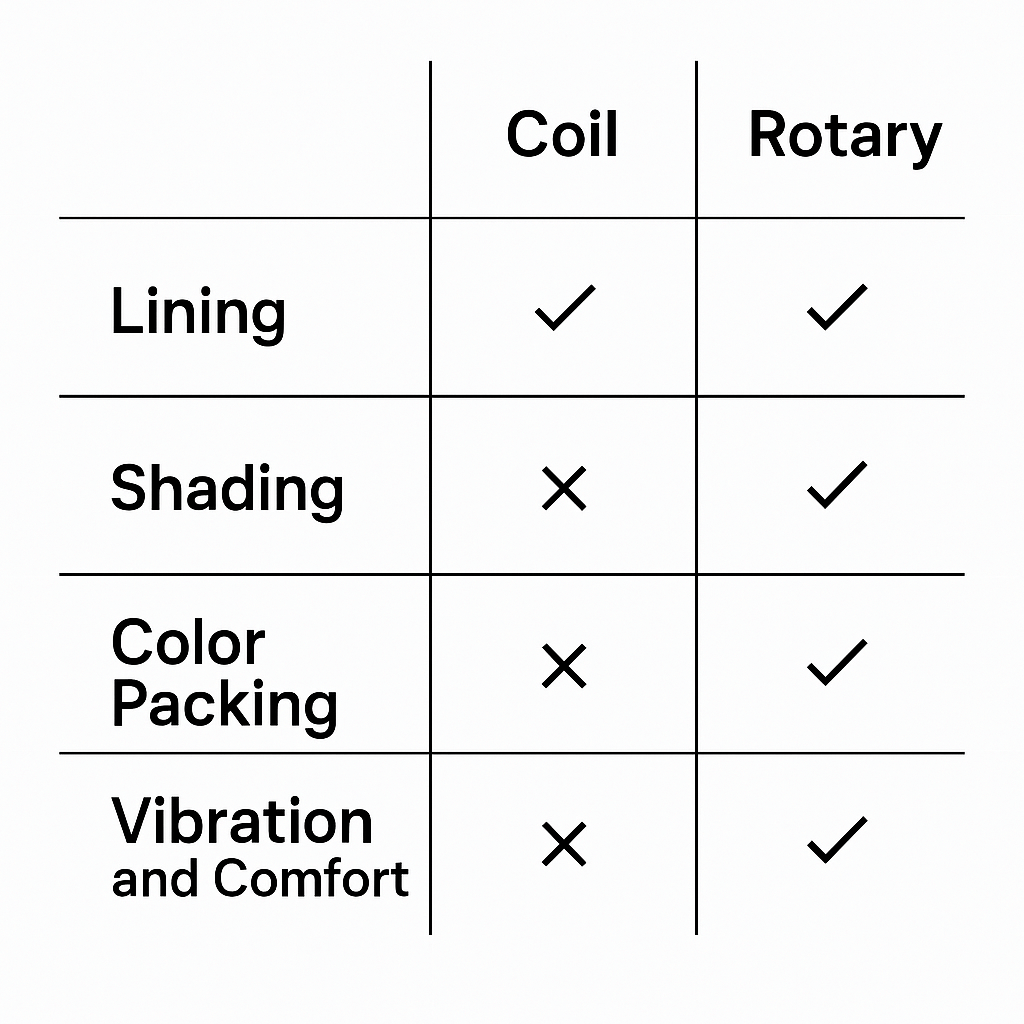 Rotary vs Coil Tattoo Machine: Performance Breakdown
Rotary vs Coil Tattoo Machine: Performance Breakdown
Lining
Coil machines dominate lining when it comes to crisp, bold outlines. The electromagnetic power delivers consistent depth and ink saturation. Many pros consider them the best tattoo machines for fine lines and bold outlines.
Rotary machines can also line well, especially with adjustable stroke machines, but they require more needle control and technique to match the precision of coils.
Shading
Rotary machines excel in shading thanks to their fluid motion. Their consistent rhythm allows for soft gradients and faster coverage—ideal for black and grey, portraits, or realism. Coil machines can also shade effectively but may cause more skin trauma due to their abrupt hit.
Color Packing
Modern rotary machines are widely used for color packing. Their smooth drive and compatibility with cartridge needles offer even saturation with less trauma—making them perfect for color tattoos and large fill work.
Vibration and Comfort
Rotary wins in comfort: lower vibration, lighter weight, and minimal noise all translate into reduced hand strain during extended sessions. Coil machines, while powerful, can fatigue the hand faster and potentially lead to joint issues with regular long-term use.
Maintenance and Troubleshooting: Which Is Easier to Handle?
Coil Tattoo Machine Maintenance Tips
Coil machines are fully manual. Artists must know how to:
- Adjust the contact screw and front spring
- Replace worn components
Understand power-to-speed dynamics
This hands-on nature appeals to technical-minded artists but poses a learning curve for beginners. How to tune a coil tattoo machine is a must-know skill for anyone choosing this path.
Rotary Tattoo Machine Maintenance Guide
Rotary machines, in contrast, are mostly plug-and-play. Most internal components are sealed for hygiene, requiring minimal adjustment.
- How to maintain a rotary tattoo machine: Regular cleaning, proper power settings, and avoiding overexposure to disinfectants.
- Rotary tattoo machine troubleshooting: Usually involves manufacturer repair or replacing the motor.
Which Is Better: Rotary or Coil Tattoo Machine?
The answer depends on your style, needs, and skill level.
- For beginners, a rotary machine offers lower maintenance, better comfort, and faster learning curves.
- For experienced artists, especially in traditional and bold line work, coil machines remain unmatched.
For realism, color packing, or portrait tattoos, rotary machines provide smoother results and faster healing.
Ultimately, many professionals use both—choosing the right tool for each job.
Shop Recommendations: Rotary and Coil Machines by Vlad Blad
At Vlad Blad, we craft tattoo machines designed to support every style and every skill level—with durability, performance, and true artistic control.
Whether you’re just starting out or looking to expand your professional toolkit, here are three versatile options to consider:
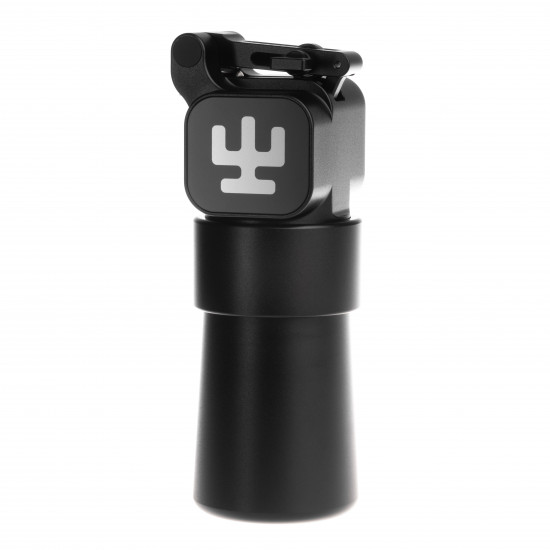
- For all-in-one versatility:
The Ultron 4 PRO Blackout is a wireless rotary tattoo machine built for power, precision, and comfort. Its adjustable stroke and modular design make it ideal for lining, shading, and color packing in one machine.
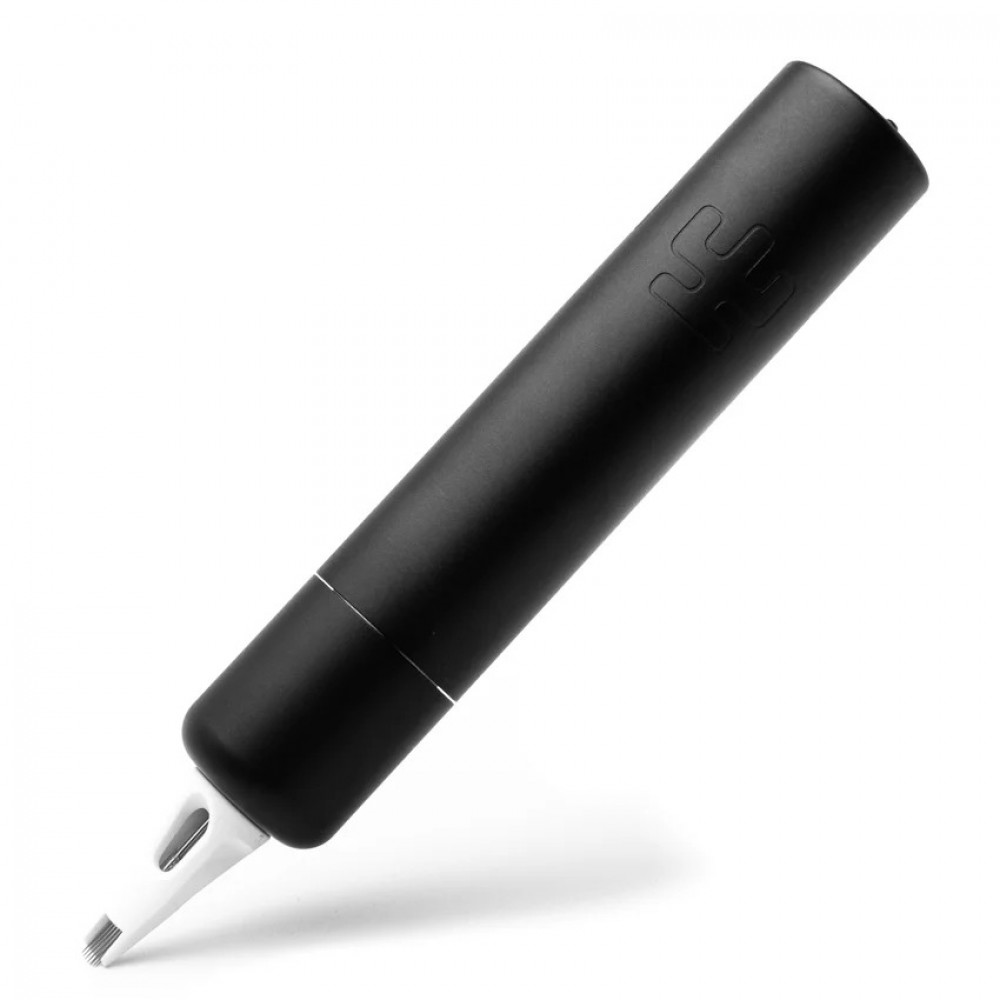
- For evolving professionals:
The Ultron 3 MAX offers unmatched stability and low vibration. Designed for both detail work and dense color fills, this rotary machine bridges flexibility with long-session comfort.
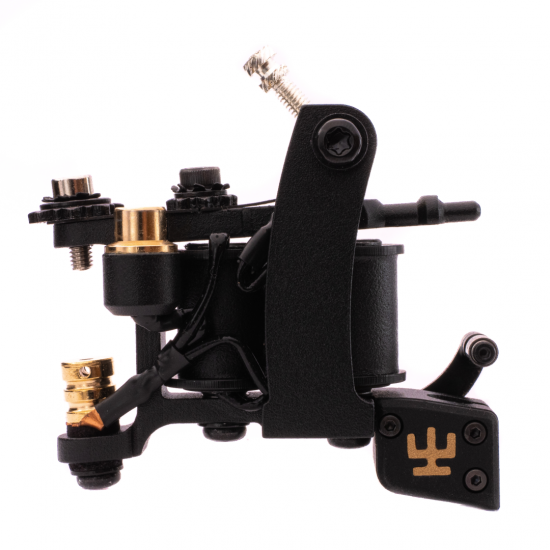
- For precision lining:
The Fine Liner PRO is a high-performance coil machine crafted specifically for creating sharp, saturated lines. Its hand-tuned mechanics give you classic coil punch with modern reliability.
Explore more in our full catalog of rotary and coil tattoo machines. Have questions? Our team is here to help you find the perfect match for your work and your style.
Choosing the Right Machine
When comparing rotary vs coil tattoo machines, the best choice aligns with your artistic goals, budget, and technical comfort. Understanding the difference between rotary and coil tattoo machines gives you the confidence to invest in a machine that supports your craft.
Whether you're just starting out or refining your toolkit, prioritize feel, control, and maintenance preferences. And if you're still undecided, consider testing both systems in a studio setting to experience firsthand what fits your hand—and your vision.
FAQ
Coil machines require manual tuning of the contact screw, spring tension, and voltage to adjust hit speed and stroke. Beginners should practice under professional guidance or follow detailed setup tutorials to avoid over-volting or damaging the machine.
Keep the machine clean, avoid over-lubricating, and check the motor regularly. Most rotary machines are sealed and should not be disassembled. Wipe down after each session using approved disinfectants.
Rotary machines are generally more beginner-friendly due to their plug-and-play nature, lower noise, and smoother motion. Coil machines require more technical skill but offer high precision once mastered.
Rotary machines are ideal for soft shading, smooth gradients, and skin-friendly color packing—perfect for portraits and realism.
Yes. The electromagnetic punch of a coil machine delivers strong, crisp lines, especially useful in traditional, tribal, or neo-traditional tattoo styles.
Absolutely. Many artists keep both types in their arsenal, using coils for lining and rotaries for shading and color work.
